 W
WJapanese American history is the history of Japanese Americans or the history of ethnic Japanese in the United States. People from Japan began immigrating to the U.S. in significant numbers following the political, cultural, and social changes stemming from the 1868 Meiji Restoration. Large-scale Japanese immigration started with immigration to Hawaii during the first year of the Meiji period in 1868.
 W
WThe 100th Infantry Battalion is the only infantry unit in the United States Army Reserve. In World War II, the then-primarily Nisei battalion was composed largely of former members of the Hawaii Army National Guard. The 100th saw heavy combat during World War II, starting in September 1943 and continuing after being attached as a battalion of the Nisei 442nd Regimental Combat Team in June 1944. The unit was unofficially nicknamed the Purple Heart Battalion, with the motto "Remember Pearl Harbor" and "Go for Broke", which was later adopted by other Japanese-American units.
 W
WThe 442nd Infantry Regiment was an infantry regiment of the United States Army. The regiment is best known for its history as a fighting unit composed almost entirely of second-generation American soldiers of Japanese ancestry (Nisei) who fought in World War II. Beginning in 1944, the regiment fought primarily in the European Theatre, in particular Italy, southern France, and Germany. The 442nd Regimental Combat Team (RCT) was organized on March 23, 1943, in response to the War Department’s call for volunteers to form the segregated Japanese American army combat unit. More than 12,000 Nisei volunteers answered the call. Ultimately 2,686 from Hawaii and 1,500 from U.S. incarceration camps assembled at Camp Shelby, Mississippi in April 1943 for a year of infantry training. Many of the soldiers from the continental U.S. had families in internment camps while they fought abroad. The unit's motto was "Go for Broke".
 W
WThe Cable Act of 1922 was a United States federal law that partially reversed the Expatriation Act of 1907. (It is also known as the Married Women's Citizenship Act or the Women's Citizenship Act). In theory the law was designed to grant women their own national identity; however, in practice, as it still retained vestiges of coverture, tying a woman's legal identity to her husband's, it had to be amended multiple times before it granted women citizenship in their own right.
 W
WCamp Savage is the former site of the U.S. Military Intelligence Service language school operating during World War II. The school itself was established in San Francisco, but was moved in 1942 to Savage, Minnesota. The purpose of the school was to teach the Japanese language to military personnel and civilians involved in the war effort. This skill could then be used to interrogate prisoners of war, translate captured documentats, serve as interpreters with Japanese civilians, and aid in the American war effort. The program was later moved to Fort Snelling in St. Paul, Minnesota.
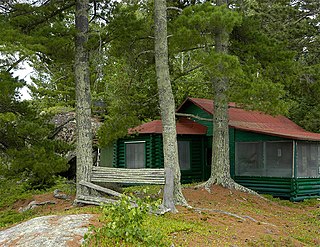 W
WThe Jun Fujita Cabin is a historic summer cabin in the U.S. state of Minnesota, owned by photographer and poet Jun Fujita (1888–1963). He built it in 1928 on an island in Rainy Lake, an area of the Boundary Waters that later became Voyageurs National Park. The cabin was listed on the National Register of Historic Places in 1996 for its local significance in the themes of art, Asian ethnic heritage, and entertainment/recreation. It was nominated for its association with Fujita, one of the first Japanese Americans to gain prominence in the American Midwest, and as a rare surviving example of the early recreational development of the Boundary Waters.
 W
WThe Hawaii Democratic Revolution of 1954 was a nonviolent revolution that took place in the Hawaiian Archipelago consisting of general strikes, protests, and other acts of civil disobedience. The Revolution culminated in the territorial elections of 1954 where the long reign of the Hawaii Republican Party in the legislature came to an abrupt end, as they were voted out of the office to be replaced by members of the Democratic Party of Hawaii. The strikes by the Isles' labor workers demanded similar pay and benefits to their Mainland counterparts. The strikes also crippled the power of the sugarcane plantations and the Big Five Oligopoly over their workers.
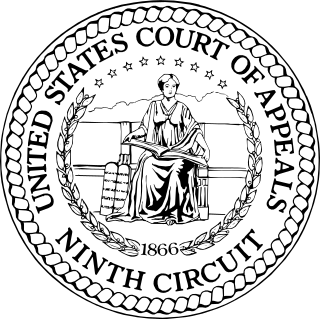 W
WHirabayashi v. United States, 828 F.2d 591, is a case decided by the Ninth Circuit Court of Appeals and recognized for both its historical and legal significance. The case is historically significant for vacating the World War II-era convictions of Japanese American civil rights leader, Gordon Hirabayashi. Those convictions were affirmed in the Supreme Court's 1943 decision, Hirabayashi v. United States. The case is legally significant for establishing the standard to determine when any federal court in the Ninth Circuit may issue a writ of coram nobis.
 W
WThere is a Japanese American and a Japanese national population in Los Angeles and Greater Los Angeles. Japanese people began arriving in the United States in the late 1800s and have settled in places like Hawaii, Alaska, and California. Los Angeles has become a hub for people of Japanese descent for generations in areas like Little Tokyo and Boyle Heights. As of 2017, Los Angeles has a Japanese and Japanese American population was around 110,000 people.
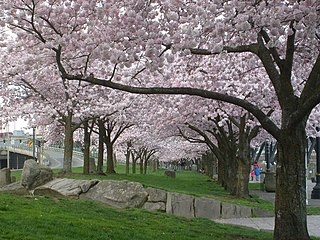 W
WThe history of ethnic Japanese in the Portland, Oregon area dates back to the 19th century.
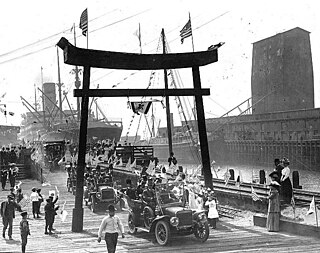 W
WThere is a population of Japanese Americans and Japanese expatriates in Greater Seattle, whose origins date back to the second half of the 19th century. Prior to World War II, Seattle's Japanese community had grown to become the second largest Nihonmachi on the West Coast of North America.
 W
WThe internment of Japanese Americans in the United States during World War II was the forced relocation and incarceration in concentration camps in the western interior of the country of about 120,000 people of Japanese ancestry, most of whom lived on the Pacific Coast. Sixty-two percent of the internees were United States citizens. These actions were ordered by President Franklin D. Roosevelt shortly after Imperial Japan's attack on Pearl Harbor.
 W
WIssei is a Japanese-language term used by ethnic Japanese in countries in North America and South America to specify the Japanese people who were the first generation to immigrate there. Issei are born in Japan; their children born in the new country are Nisei ; and their grandchildren are Sansei.
 W
WJapan-United States Friendship Act of 1975 seek to establish a cooperative peacetime friendship through the exchange of artistic and cultural endowments. The United States statute is a declaration stating a Japan-United States friendship will provide a global model partnership leading to future peace, prosperity, and security in Asia. The Act of Congress acknowledges the 1971 Okinawa Reversion Agreement relinquishing United States authority of the Okinawa Prefecture better known as the Daitō Islands and Ryukyu Islands. The Act created the Japan-United States Friendship Trust Fund and Japan-United States Friendship Commission developing programs for the artistic and cultural exchanges between America and Japan.
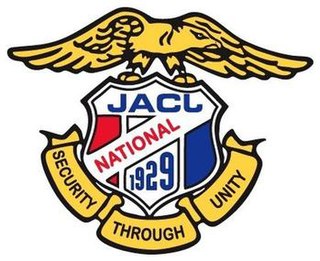 W
WThe Japanese American Citizens League is an Asian American civil rights charity, headquartered in San Francisco, with regional offices across the United States.
 W
WJapanese Americans are Americans who are fully or partially of Japanese descent, especially those who identify with that ancestry and its cultural characteristics. Japanese Americans were among the three largest Asian American ethnic communities during the 20th century; but, according to the 2000 census, they have declined in number to constitute the sixth largest Asian American group at around 773,000, including those of partial ancestry. According to the 2010 census, the largest Japanese American communities were found in California with 272,528, Hawaii with 185,502, New York with 37,780, Washington with 35,008, Illinois with 17,542, and Ohio with 16,995. Southern California has the largest Japanese American population in North America and the city of Gardena holds the densest Japanese American population in the 48 contiguous states.
 W
WThere is a Japanese community in the Columbus, Ohio area.
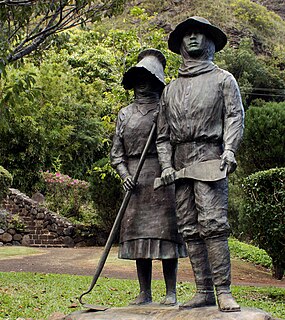 W
WThe Japanese in Hawaii are the second largest ethnic group in Hawaii. At their height in 1920, they constituted 43% of Hawaii's population. They now number about 16.7% of the islands' population, according to the 2000 U.S. Census. The U.S. Census categorizes mixed-race individuals separately, so the proportion of people with some Japanese ancestry is likely much larger.
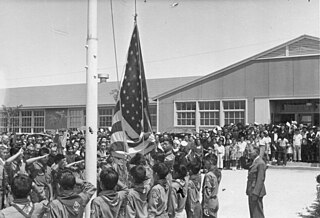 W
WDuring the early years of World War II, Japanese Americans were forcibly relocated from their homes in the West Coast because military leaders and public opinion combined to fan unproven fears of sabotage. As the war progressed, many of the young Nisei, Japanese immigrants' children who were born with American citizenship, volunteered or were drafted to serve in the United States military. Japanese Americans served in all the branches of the United States Armed Forces, including the United States Merchant Marine. An estimated 33,000 Japanese Americans served in the U.S. military during World War II, of which 20,000 joined the Army. Approximately 800 were killed in action.
 W
WLos Angeles Tofu Festival, usually known as Tofu Festival or Tofu Fest, was a weekend matsuri held every August in Little Tokyo, Los Angeles from 1995 to 2007. Due to ongoing redevelopment in Little Tokyo there is no longer enough space to hold a festival of the size of Tofu Fest, and it has been canceled indefinitely, the last festival being held in 2007.
 W
WThe Manzanar Children's Village was an orphanage for children of Japanese ancestry incarcerated during World War II as a result of Executive Order 9066, under which President Franklin Roosevelt authorized the forced removal of Japanese Americans from the West Coast of the United States. Contained within the Manzanar concentration camp in Owens Valley, California, it held a total of 101 orphans from June 1942 to September 1945.
 W
WThe Military Intelligence Service was a World War II U.S. military unit consisting of two branches, the Japanese American unit described here and the German-Austrian unit based at Camp Ritchie, described partly in Ritchie Boys. The unit described here was primarily composed of Nisei who were trained as linguists. Graduates of the MIS language school (MISLS) were attached to other military units to provide translation, interpretation, and interrogation services.
 W
WThe Mukai Cold Process Fruit Barrelling Plant in Vashon, Washington, U.S., is a former fruit processing plant originally constructed and owned by the Japanese American Mukai family. In 1993 it became the first location associated with Japanese American history to be designated a King County landmark and was listed the following year on the National Register of Historic Places. The National Park Service (NPS) describes the 4.8-acre (1.9 ha) site as "a rare, intact example of a property associated with the history of Japanese American settlement in Washington."
 W
WMykawa is an area within Houston, Texas, United States that was formerly a distinct unincorporated community in Harris County.
 W
WNihon Go Gakko also known as the Japanese Language School (JLS) is a National Register of Historic Places in King County based at the Japanese Cultural and Community Center of Washington located on the periphery of the Seattle International District. The JLS provides Japanese language classes to both children and adults. Originally known as Kokugo Gakko, it is also the oldest Japanese language school in North America.
 W
WThe Nihon Go Gakko alternately, Nihon Gogakko, in what was then Tacoma, Washington's Japantown, was one of 24 Japanese language schools that existed in Washington prior to World War II.
 W
WThe Nippu Jiji , later published as the Hawaii Times, was a Japanese-English language newspaper based in Honolulu, Hawai'i. Established as the Yamato Shimbun by Shintaro Anno in 1895, the paper began as a six-page semi-weekly printed on a lithograph machine, and changed hands four times before being taken over by Yasutaro "Keiho" Soga in 1905. Soga changed the name of the paper to the Nippu Jiji, Japanese for "newspaper for telling timely news," on November 3, 1906, and under his direction the paper was expanded to a twelve-page daily printed on a rotary press with a circulation of 15,000.
 W
WNisei is a Japanese language term used in countries in North America and South America to specify the ethnically Japanese children born in the new country to Japanese-born immigrants. The Nisei are considered the second generation, and the grandchildren of the Japanese-born immigrants are called Sansei, or third generation.
 W
WThe Nisei Soldiers of World War II Congressional Gold Medal is an award made for the Japanese American World War II veterans of the 100th Infantry Battalion, the 442nd Regimental Combat Team and the Military Intelligence Service. The Congressional Gold Medal is the most prestigious award given to civilians in the United States for achievements and contributions. The medal was approved by Congress under Public Law 111–254 in 2010 to honor the Japanese Americans who had served in the war. It was collectively presented on November 2, 2011.
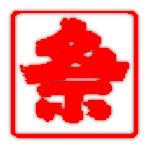 W
WNisei Week is an annual festival celebrating Japanese American (JA) culture and history in Little Tokyo, Los Angeles. Nisei means 2nd generation in Japanese, describing the first American born Japanese, a group which the seven-day festival was originally meant to attract. Though named for the Nisei generation, Nisei Week is no longer targeted at Niseis, nor is the festival still contained within a week. Nisei Week Foundation president for 2006, Michelle Suzuki, described the festival as "the opportunity for people of all backgrounds to celebrate Japanese heritage and culture".
 W
WThe North American Post is a newspaper based in Seattle, Washington's International District. It was founded in 1902 and is the largest and oldest Japanese-language newspaper published in the Pacific Northwest.
 W
WEvelyn Okubo was a Japanese-American sansei teenager killed during the 1970 convention of the Japanese American Citizens League (JACL) at the Palmer House hotel in Chicago. Her 17-year-old roommate, Ranko Carol Yamada, was also severely wounded, yet survived. The murder caused a significant stir within the Japanese-American community, in part because Yamada alleged that the killer was Black, just at the height of violence associated with the Black Panther Party. The killer was never found.
 W
WThe Seattle Dojo is located at 1510 S. Washington in the Squire Park neighborhood of Seattle, Washington. It is the oldest judo dojo in the continental United States, having been founded sometime before 1907 in what is today the International District.
 W
WThe Yellow Peril is a racist color-metaphor that represents East Asian peoples as an existential danger to the Western world. As a psycho-cultural menace from the Eastern world, fear of the Yellow Peril is racial, not national, a fear derived not from concern with a specific source of danger or from any one people or country, but from a vaguely ominous, existential fear of the faceless, nameless hordes of "yellow people" in the Asia-Pacific opposite the Western world. As a form of xenophobia, the Yellow Terror is fear of the Oriental, non-white Other, a racialist fantasy presented in the book The Rising Tide of Color Against White World-Supremacy (1920), by Lothrop Stoddard.